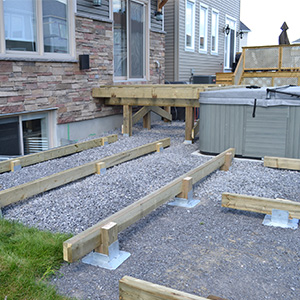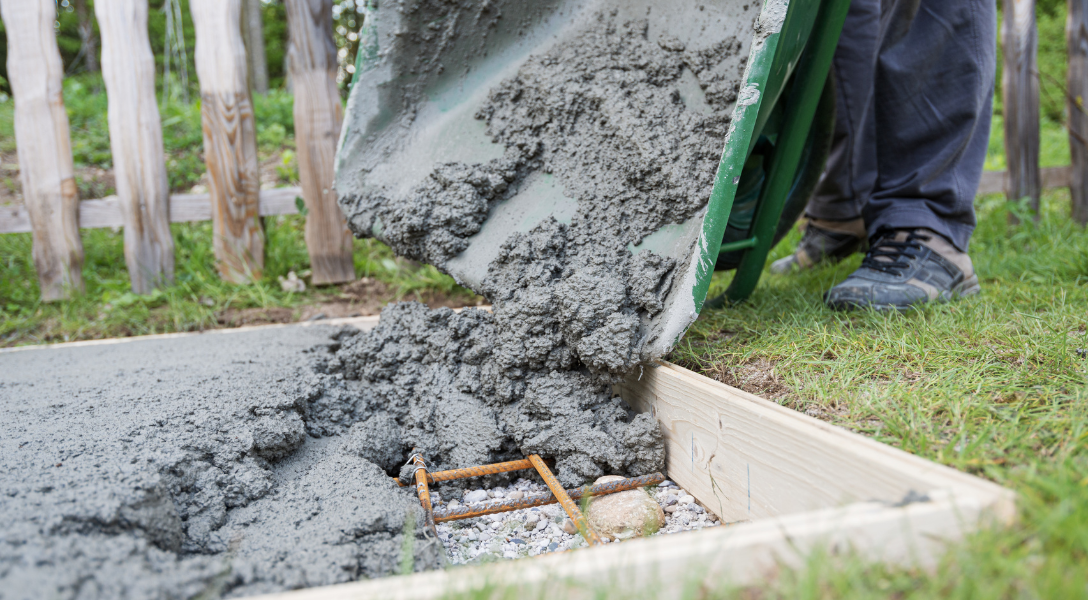Professional Tips for Installing Deck Footings to Assistance Your Outdoor Area
When it concerns building a deck, among the most crucial aspects to consider is the setup of correct footings. These grounds are the structure upon which your exterior area will certainly rest, giving security and support for many years to find. What specifically does it take to set up deck grounds correctly? In this conversation, we will discover professional suggestions and methods that can aid ensure a durable and successful deck setup. From picking the right kind of footings to preventing usual blunders, we will offer you with the expertise and understandings you require to with confidence start your deck-building journey. Let's dive right in and discover the key to a durable and strong exterior room.
Significance of Appropriate Deck Grounds
Correct deck grounds are essential for guaranteeing the stability and longevity of your outdoor room. When constructing a deck, it is vital to take note of the structure on which it will relax. Deck grounds provide the needed support for the whole framework and aid disperse the weight uniformly - Deck Footings. Without strong and correctly installed grounds, your deck may become unstable, leading to safety threats and costly fixings.

In addition to stability, correct deck grounds likewise add to the long life of your exterior area (Deck Footings). Footings that are created and built to stand up to the aspects and dirt problems in your area will certainly assist avoid the deck from changing or resolving over time. By making certain the grounds are correctly sized and installed, you can decrease the threat of damage to the deck framework, expanding its life expectancy and minimizing the requirement for costly fixings or replacements

Picking the Right Kind Of Footings
When choosing the proper kind of grounds for your deck, it is vital to think about aspects such as dirt problems, neighborhood building regulations, and the overall design of your outside room. The kind of footing you select will play a crucial role in ensuring the stability and longevity of your deck.
One typical type of footing is the concrete footing. Concrete footings are appropriate for a lot of dirt conditions and supply superb assistance for decks.
In some cases, you might require to make use of customized grounds, such as heap grounds or deep structures, if you are constructing a large or multi-level deck. These footings are designed to distribute the weight of the deck over a bigger location, ensuring security and protecting against sinking or working out.
Before picking a kind of footing, it is vital to seek advice from regional building regulations and regulations to ensure conformity. In addition, take into consideration the layout and intended use your exterior room. Factors such as the size, form, and load-bearing requirements of your deck will certainly affect the kind of footing that is most ideal.
Preparing the Ground for Footing Installment
To correctly prepare the ground for footing installment, it is essential to analyze the soil problems and take required actions to guarantee security and sturdiness of the deck. The first action is to dig deep into the area where the grounds will certainly be mounted.
When the location has been excavated, the following step is to compact the dirt. This can be done utilizing a plate compactor or by utilizing a hand meddle. Condensing the dirt helps to get rid of any kind of voids or air pockets, which can lead to settling and instability with time.
After compacting the dirt, it is very important to lay a layer of crushed rock or smashed stone at the bottom of the excavation. This will provide drain and aid to stop water from pooling around the grounds, which can lead to erosion and instability.
Step-by-Step Overview to Putting Up Deck Footings
After correctly preparing the ground for footing setup, the next action is to begin the procedure of setting up deck grounds. This detailed guide will certainly offer you with a clear understanding of just how to install deck grounds for your outdoor area.
Identify the area: Start by noting the settings of the deck grounds making use of stakes and string. Make certain that the areas line up with the layout and layout of your deck.
Dig the holes: Make use of a post opening miner or an auger to dig the openings for the footings. The depth and diameter of the holes should be in accordance with neighborhood building ordinance and the specific requirements of your deck design.
Level the holes: Use a level to make sure that the openings are dug to the correct deepness and are level with each other. (Deck Footings)
Include crushed rock: Area a layer of gravel at the base of each hole to enhance drainage and avoid the wood from decomposing.
Place the footings: Place the footings right into the openings, ensuring they are degree and plumb. Make More hints use of a degree and a measuring tape to guarantee accuracy.
Secure the grounds: Pour concrete right into the holes around the footings, loading them to the top. Make use of a message level to make certain the grounds continue to be degree as the concrete collections.
Permit time for treating: Let the concrete remedy according to the producer's guidelines prior to waging the deck construction.
Common Mistakes to Avoid During Footing Setup
One essential aspect to think about during the installation of deck footings is avoiding common blunders that can jeopardize the security and durability of your outdoor area. While deck footings might look like a straightforward and simple part of the construction procedure, forgeting particular aspects can lead to expensive repair work and possible safety dangers down the line.

In addition, ignoring to install appropriate water drainage procedures can create water to build up around the grounds, resulting in rot, degeneration, and the eventual weakening of the deck's foundation. Using the wrong kind of footing product or failing to appropriately protect the grounds can endanger their structural stability.
To stay clear of these errors, it is vital to speak with a professional or comply with industry standards to guarantee appropriate ground installment. By doing so, you can ensure the security and durability of your outdoor area, giving a safe and delightful environment for years ahead.
Final Thought
In verdict, installing proper deck footings is important for the security and durability of your exterior room. By picking the appropriate kind of grounds and sufficiently preparing the ground, you can make certain a go right here strong foundation for your deck. Following a step-by-step guide and preventing usual mistakes during footing installment will further improve the durability and safety of your deck.
Proper deck grounds are important Check Out Your URL for guaranteeing the security and durability of your outdoor room. The footings serve as a connection in between the deck and the ground, allowing the weight of the deck and its residents to be spread evenly into the dirt.One typical kind of footing is the concrete ground. Insert the grounds: Place the footings right into the openings, making sure they are degree and plumb. Safeguard the footings: Pour concrete right into the holes around the footings, loading them to the top.